16 October 2024
|
BattleTech is a wargame that puts mech against mech in a crunchy battle, that saw huge popularity in years past. Whilst it never really left us, its new venture back into mainstream is an exciting one, and the perfect time to get involved.
Written by Mike Whitaker
So, remember BattleTech? That game of big stompy robot combat that kicked off in the mid-‘80s, grew in popularity to the point that it even spawned a Saturday morning cartoon series in the ‘90s with (then) state-of-the-art computer animation, a roleplaying game and several computer games…and then vanished?
Well. It’s back. In fact, truth to tell, it actually never disappeared as such, just went on a long and rather meandering trip around the galaxy, and after two incredibly successful Kickstarter projects, it’s definitely taking off again. It’s the game’s 40th anniversary this year. Whether you remember it first time around or not, sit back and let me tell you the story.

History of BattleTech
BattleTech (or BattleDroids as it was) was started by FASA in the mid-80s as a hexmap-based wargame, involving 10+ meter tall mecha, at least in part heavily inspired by the Japanese anime Macross and others (and, indeed, using some of the mecha designs with permission). The key differentiator between BattleTech and other similar games was then, and still is now, the sheer depth of the background lore, which rivals, and indeed, probably surpasses, the likes of Warhammer 40K. At the point I got into the game in the early ‘90s, FASA were putting out sourcebooks and novels pretty much quarterly, covering a future history spanning over a millennium, in considerable detail.
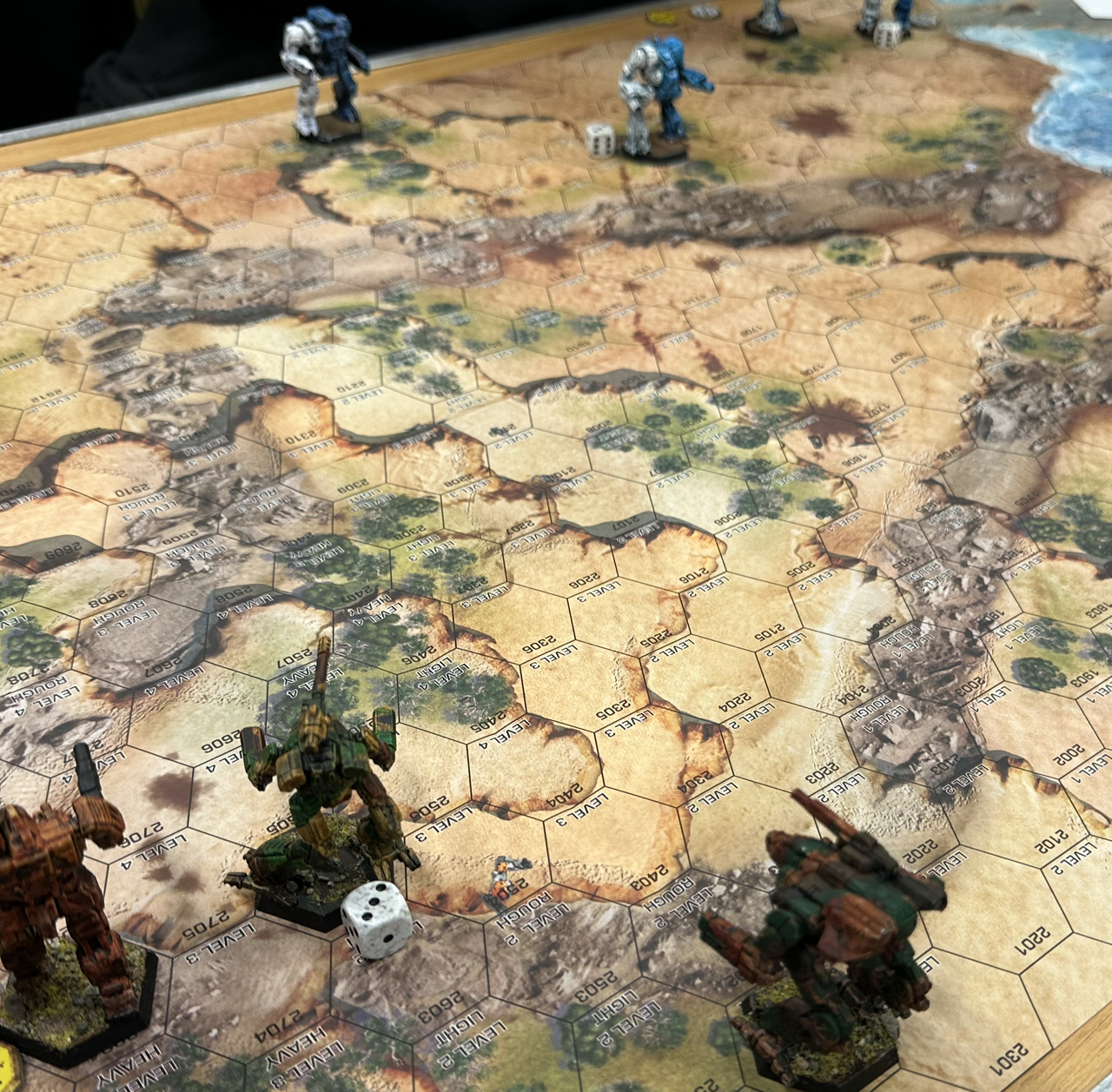
FASA closed down in 2000, selling the rights to WizKids. Those who missed the original game may remember the MechWarrior: Dark Age ‘Clix system’ game they produced, based on the same IP (affectionately known to BattleTech die-hards as ‘ClickyTech’). WizKids were bought by Topps in 2003, and the game continued until 2007, when Catalyst Game Labs, the current license holder, acquired the rights from Topps. They re-released the original game as Classic BattleTech, in that year, and followed up with several more editions up until 2019, when they launched the first of two hugely popular Kickstarter projects and things really took off again, bringing the game to a new audience.
In parallel with that, there have been a number of video games produced, largely under the MechWarrior title, and the rights for these are held currently by Microsoft. Again, quite a lot of folks have come into the setting via these, and are, surprisingly often, not aware of the connection to the original board/wargame.
BattleTech Setting
So, that’s the meta-history of the game. What about the setting, I hear you ask?
BattleTech is set in an alternate future that diverges from ours after the collapse of the Soviet Union. There are perhaps three key conceits: firstly, no intelligent alien life (with the exception of one novel, whose canonicity is hotly debated, deliberately set a long way apart from the main setting); secondly, the existence of hyperspace travel via the Kearny-Fuchida drive (hey, every SF setting has to have some kind of hyperdrive that bends the laws of physics!), and, thirdly and obviously, the rise of the BattleMech as the principal war machine.
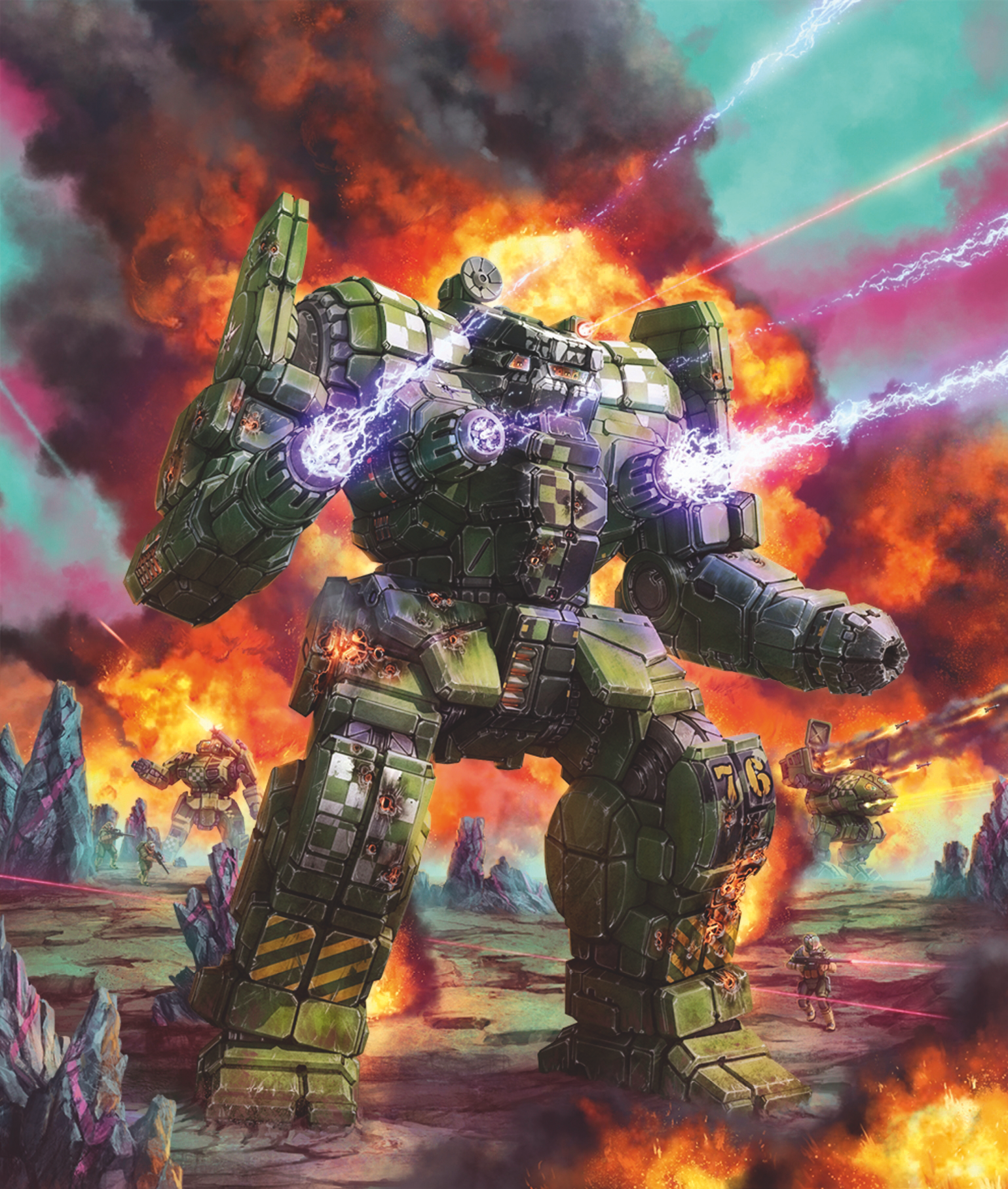
The original setting of the game in 3025, in the Inner Sphere of worlds within a few hundred light years of Terra, involves the five major noble houses (Davion, Steiner, Kurita, Liao and Marik) each commanding a portion of space, and continually bickering and struggling over which of them is the rightful successor to the now fallen/vanished Star League that used to unite them. One of the main concepts at that point is that Star League technology has fallen into disrepair and disuse (referred to as Lostech), and ‘Mechs and knowledge of the technology used to make them are a precious and scarce resource.
Subsequent advancements have bumped the story forward by generations, first to 3039 with the in-universe discovery of the Helm Memory Core with hitherto lost details of Star League technology. The next jump was to the year 3050, with the coming of the Clans (ooo, spoilers!), still a hotly debated topic among BattleTech diehards, and there have been several more since. All preserve the Game of Thrones-level political intrigue and continuing warfare that began things, and the sheer depth of the lore is breathtaking.
Playing BattleTech
Perhaps the most important takeaway from a gaming point of view is that the mechanics of ‘Classic’ BattleTech have remained fundamentally unchanged since the ‘80s. Players of the game then (such as me) can pick up a current set of rules and feel immediately at home. They may not be familiar with all the rules for new technology as the setting has advanced, but it’s still perfectly possible to play a game set in 3025 (and many do) and be comfortable with the reassuring familiarity of how it all works, pretty much like it did nearly four decades ago. Essentially, it’s very much like historical wargaming: pick a period you’re happy in!
Classic BattleTech lends itself best to about four ‘Mechs a side on two to four 17”x22” hex maps - it’ll easily fit on a 4’x4’ table and finish in a club evening. The rules are what many would describe as ‘crunchy’: you fire individual weapons, damage effects are by location on the target ‘Mech and you will find yourself managing how hot your ‘Mechs are getting as well. If you like small scale but detailed, and are happy rolling lots of d6 in pairs, Classic is the ruleset for you. (That said, I have played several ridiculously large all day games of Classic recently, and they were great fun!)
If you prefer something a bit larger in scope, you want to try…
Alpha Strike
Alpha Strike (AS for short) is the (relatively) new kid on the block. First released in 2014, it describes itself as “for the modern tabletop miniatures wargamer”. Essentially, instead of per-weapon firing and per-location damage tracking, each ‘Mech has its stats abstracted away to a fire factor at short, medium and long ranges, and one set of armour and internal structure points as well as a Move (in inches) and various special ability tags. Its other key difference is that it doesn’t require a hex map: you play on a more typical wargames-style terrain table. The whole of a ‘Mech’s stats fit on one standard-sized game card.
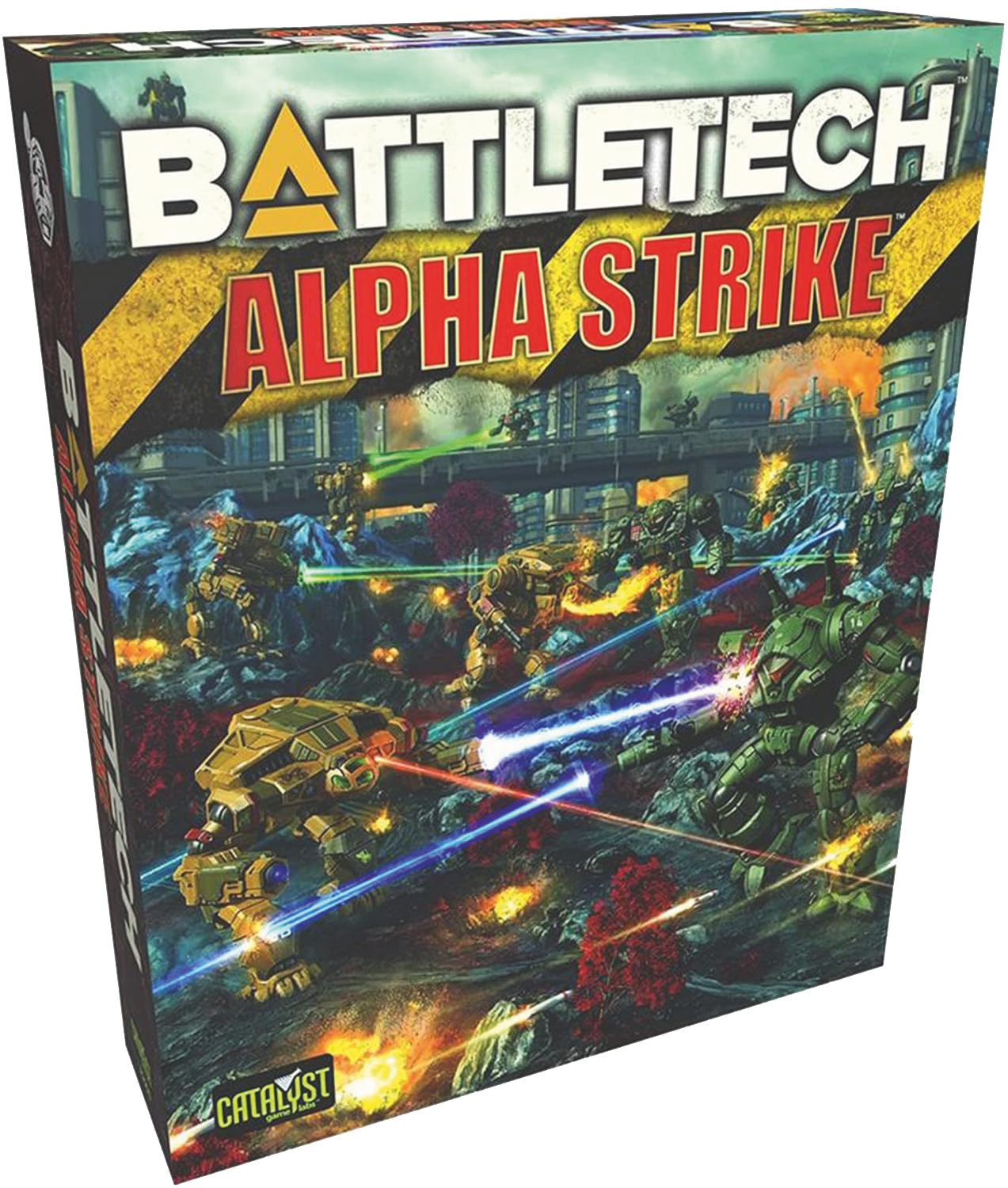
The result is a game that’s literally possible to learn from scratch in the first round of action, where you can finish a company level (12 or so ‘Mechs per side) game in an evening. Again - easy to play, easy to teach. Unsurprisingly, it also lends itself to tournament play. There are also rules should you want to play Classic without hexes, or AS on hexes!
BattleTech... The RPG?
Certainly. As befits a game with rich lore and background, BattleTech lends itself to political intrigue, espionage, romance, mercenaries, the whole nine yards. And perhaps unsurprisingly, there are two official RPG systems as well.
There’s A Time Of War, which is the ‘old school’ RPG, very detailed with skills and stats for everything and a Traveller-like background creation system (those familiar with the latter will be relieved to know you can’t die in character generation this time!). ATOW has its beginnings in the original MechWarrior RPG from the early 90s, which is actually where I started in the game. There’s a quick start version of the rules available online for free.
If you prefer something in the more modern style of roleplaying, then there’s MechWarrior: Destiny, which is to A Time of War what Alpha Strike is to Classic - much lighter in weight and freeform, less crunchy, designed more for collaborative story-telling than a GM-led tale. Again, both are excellent, and I’d go with whichever grabs you more.
How to get into BattleTech
Well, if you’ve still got your old maps, rules and minis? You’re fine! Maybe grab one of the rulebooks (Total Warfare or the BattleTech Manual) from the Catalyst web store (in PDF), or your FLGS if they have it in stock in hardcopy, so you’re playing with the latest revision of the rules, and off you go.
If you’re looking to start afresh, or you’ve come into the setting via the novels, the MechWarrior video games or even ClickyTech, I’d suggest that you grab the A Game Of Armoured Combat box set. Eight beautifully-sculpted plastic ‘Mechs, the rules and a couple of map sheets will get you off and running. If you really want to get started with a cut-down set of very basic rules, there are a couple of cheaper Beginner Boxes with two ‘Mechs, and the rules for those are actually a free download from their website.
Buy BattleTech: A Game of Armoured Combat on Amazon
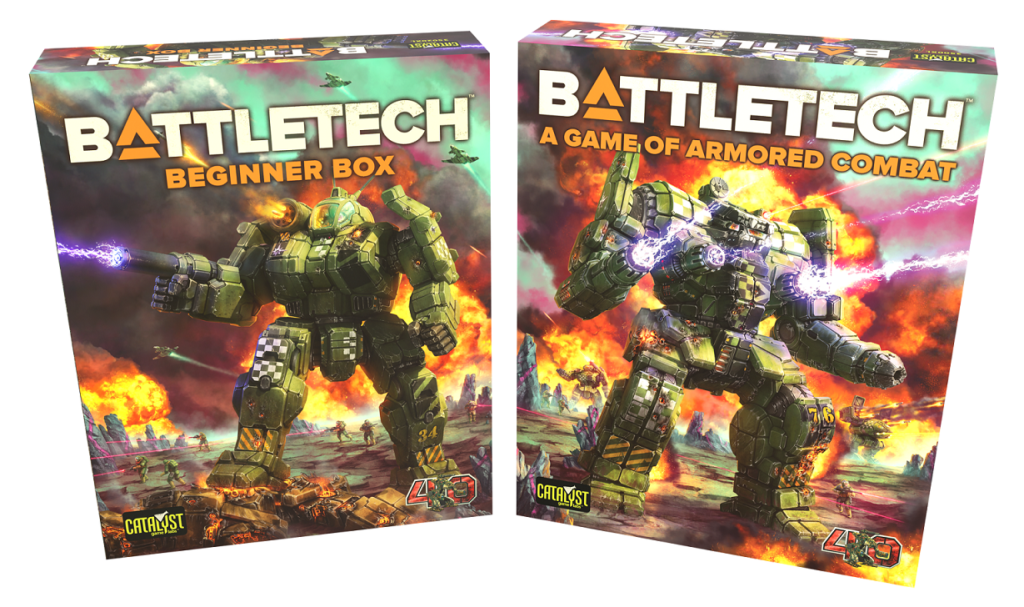
If you’d rather try Alpha Strike first, the introductory AS rules are a free download from the same place, or you can go with the Alpha Strike box set with the rules, 13 ‘Mechs, card buildings, counters etc. It’s worth remembering that the ‘Mech miniatures are universally useable for both rulesets, Classic and Alpha Strike.
From there on, the world is your oyster. There’s the Clan Invasion box set, with another bunch of ‘Mechs for both Classic and Alpha Strike, and then there are nearly 20 (so far) force packs containing yet more plastic minis and their Alpha Strike cards. The full Alpha Strike rules are in the Commander’s Edition rulebook, again available in PDF or hardback.
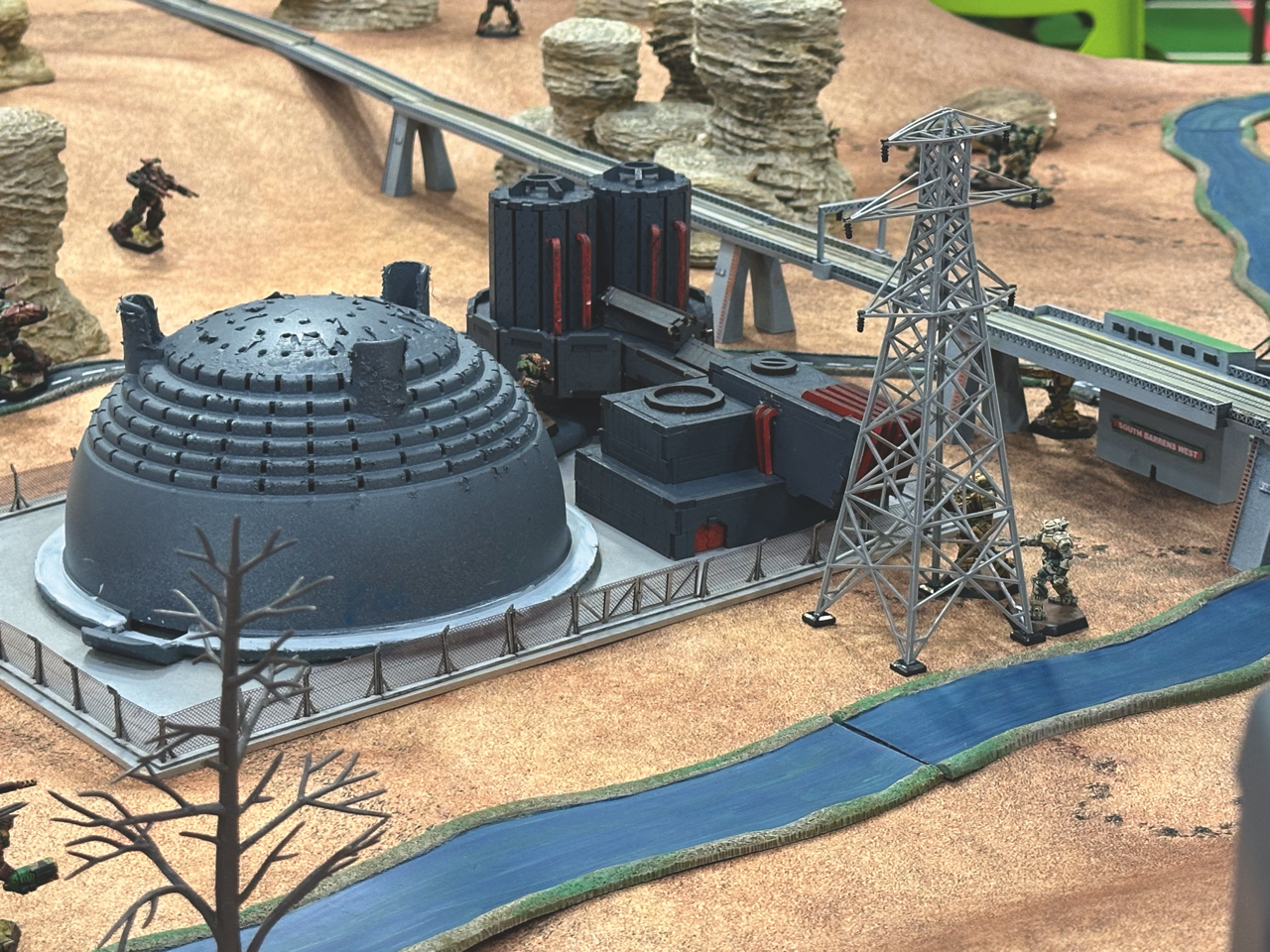
You can get the Classic reference sheets online for free for all of the force packs (in the usual place), and if you’re still looking for more, Iron Wind Metals do loads of the more obscure ‘Mechs and vehicles in metal, or you can just wait (if you haven’t already pledged) until the new force packs and box set from the Mercenaries Kickstarter hits the shops with yet more lovely plastic goodies.
If you want campaigns, there’s the Campaign Operations book as well as some easy-to-run Chaos Campaigns. On top of that, there are rules for air and space combat, setting and plot sourcebooks, and as I mentioned before, over 100 novels, spanning the entire history of the setting.

I love BattleTech. It is, at its core, fabulously easy to learn in both its wargame variants, but for me, it’s the massive sweep of the lore that continues to fascinate me and keep me coming back after all this time. Now, if you’ll excuse me, I’m still about 85 in-game years behind on the novels, and I only have a few months before my Kickstarter shipment arrives to paint what I already have...
Related article: Beginner's Guide to assembling plastic miniatures







